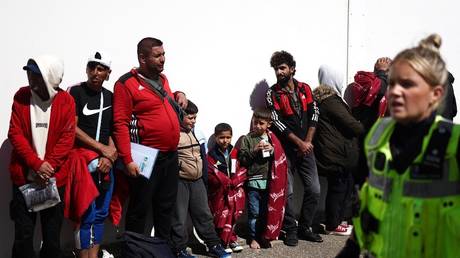Is the U.S. Planning a Long-Term Presence in Syria?

As gains are made against the Islamic State and other Islamist rebel factions in Syria, the United States appears ready to prevent the Assad regime from making major advances in the eastern half of the country, possibly suggesting plans for a long-term U.S. presence.
In both Syria and Iraq, Iran-backed Shi’ite militias play an active role in the fight against militants, assisting the Assad government with operations against rebels and the U.S.-led coalition with clearing ISIS out of Mosul, the group’s Iraqi capital.
One Shi’ite militia, part of what is known as the Popular Mobilization Forces, or PMFs, took several Iraqi villages from ISIS near the Syrian border on Monday as part of an operation to link up with Assad-allied forces on the Syrian side of the border and secure a vital supply route. It is this key operation which the U.S. apparently seeks to scuttle.
The Damascus-Baghdad highway is one of several important roads the Syrian government seeks to control. Securing a safe route between Iraq and Syria will allow Assad’s Iranian partner a much easier supply line to its militia proxies, and it will facilitate Assad’s planned assault on ISIS-held cities such as Raqqa and Deir Ezzor.
On the Syrian side, just across the border from the recently-liberated villages now occupied by the PMFs, U.S.-backed Syrian Kurds hold territory. It is not clear whether they would allow the PMFs to cross their area to reach Assad’s army, deployed further south and further west in the country, but the May 18 American bombing of a Syrian-allied tank convoy suggests the U.S. would not allow them to do so.
As a Shi’ite militia tank column maneuvered 15 miles outside a joint American-British base near the Syrian-Iraqi border crossing at al-Tanf, American warplanes bombed the convoy, destroying 5 out of 27 vehicles and killing eight soldiers. American and British special forces train Free Syrian Army rebels for anti-ISIS operations at the base.
Washington seeks to prevent Iran a supply line into Syria for fear that it will also bolster Hezbollah, Iran’s most prominent militia proxy based in Southern Lebanon, and threaten Israel. Hezbollah also participates in the Syrian war on behalf of Assad.
“Only thus can a contiguous line of Iranian control from the Iraq-Iran border to the Mediterranean and Israel be prevented,” writes Jonathan Spyer at the Middle East Forum. “Only thus will the U.S. be able to prevent an eventual outcome in Syria and in Iraq entirely favorable to the Iranians.”
Indeed, this illustrative quote demonstrates America’s true role all along in the Syrian war, to hurt Iran on behalf of Saudi and Israel, our loyal allies.
However, that raises the question: how long will the U.S. have to stay involved in Syria if it is to permanently deprive Iran its vital supply route? Eventually ISIS will be pushed out of its urban centers of power and control of Syria will return to its sovereign government. Is the U.S. prepared for long-term occupation of the Syrian desert, or perhaps rather to fund proxies to stay there?
Keeping a long-term U.S. military presence in Syria would create a terrorism magnet and likely ruffle the feathers of the Syrian government and its Iranian and Russian allies. It remains to be seen whether the U.S. will take this route, but the way the conflict has proceeded the last few weeks does not inspire confidence.
Delivered by The Daily Sheeple
We encourage you to share and republish our reports, analyses, breaking news and videos (Click for details).
Contributed by Will Porter of The Daily Sheeple.
Will Porter is a staff writer and reporter for The Daily Sheeple. Wake the flock up – follow Will’s work at our Facebook or Twitter.



